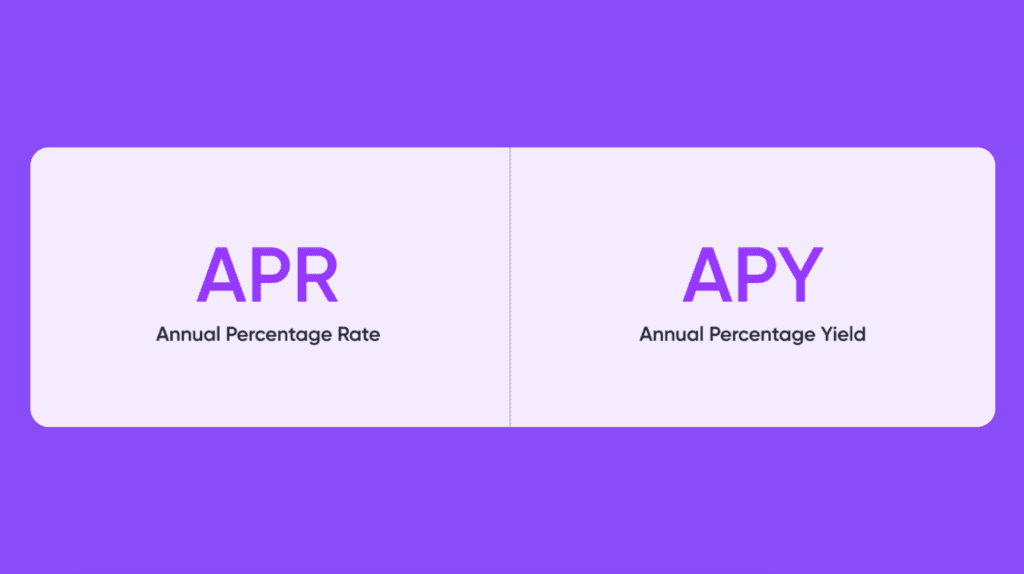
Staking is one of the most popular ways to make money on cryptocurrencies. How can you earn through staking? You can provide a certain amount of cryptocurrency to the blockchain to support its operations and, in return, receive rewards. The process is similar to bank deposits.
In this article, we will discover what staking is, the different types of staking, and how it differs from mining.
Staking: What is it
Staking is the process of participating in a blockchain by locking a certain amount of cryptocurrency for a specific period to validate transactions on the blockchain. As a reward, participants usually receive the same tokens they staked. However, there can be exceptions. For example, with DOT (Polkadot), the profit is paid in other assets.
There are two indicators commonly used to measure the profitability of staking:

Instead of relying on computational power like in the case of Proof of Work (PoW), Proof of Stake (PoS) relies on ownership of coins. Participants who hold a larger amount of coins have a higher chance of being selected to create blocks and receive rewards.
Cryptocurrencies That Operate On PoS
Ethereum 2.0 (ETH)
On September 15, 2022, the second-largest cryptocurrency by market capitalization transitioned from Proof of Work (PoW) to Proof of Stake (PoS). According to ethereum.org, over 20 million Ether tokens have been staked in the Beacon Chain.

The minimum amount required for staking is 32 ETH. However, there are staking pools available where you can join forces with others. The staking yield for Ethereum through the mentioned service is 4.7% APR. Furthermore, you can stake Ethereum through DeFi (Decentralized Finance) providers. The most well-known among them is Lido Finance, which offers a yield of 3.9% APR at the moment of writing this article.
Staking pools are groups of users combining their resources to participate in the staking. This way, you can increase the chances of receiving staking rewards and make it without significant investments.
Cardano (ADA)
This project utilizes a unique variation of Proof-of-Stake (PoS) known as Ouroboros. Unlike Ethereum, Cardano was created based on the PoS algorithm. The minimum amount required for staking is 10 ADA.

In this project, users can delegate their stake to a staking pool without transferring ownership rights of their ADA tokens. It is similar to how things work in Ethereum’s Beacon Chain. Currently, the APR (Annual Percentage Rate) ranges from 4% to 6%.
Tezos (XTZ)
Tezos uses a consensus mechanism called Delegated Proof-of-Stake (DPoS), where block selection is done through voting by representatives chosen by the community. The minimum amount required for staking is 1 XTZ. On average, staking XTZ can yield an annual return ranging from 5% to 7%.

Cosmos (ATOM)
This project utilizes a PoS variation called Bonded Proof-of-Stake (BPoS). Currently, the annual staking reward for Cosmos ranges from 7% to 10%.

Polkadot (DOT)
Polkadot uses a unique mechanism called Nominated Proof-of-Stake (NPoS). The minimum amount required for staking is not fixed and depends on specific validator requirements. On average, staking DOT can yield an annual return ranging from 10% to 15%.

Please note that the provided percentage yields may significantly differ from the ones you encounter. Everything depends on the market situation and the chosen protocol.
Differences Between Staking And Mining
Mining is the process of creating new blocks in the blockchain. Miners solve complex mathematical problems using specialized devices (GPU, ASIC). Upon successfully solving the problem, miners receive rewards in the new coins, like bitcoins. The main goal of mining is to ensure network security and validate transactions.
The main differences between staking and mining are in the table below:
| Staking | Mining |
| Participants lock funds | Participants use computational power |
| Rewards for verifying transactions | Rewards for successful block creation |
| Environmentally friendly process | Energy-intensive and costly procedure |
| Stable and predictable income | Income can vary significantly depending on network difficulty |
| Low entry barrier | Requires significant investments |
| Promotes network decentralization | Can lead to a 51% attack, which nullifies decentralization |
| Participants do not risk equipment becoming obsolete | Equipment needs regular upgrades |
Types of staking
Mining differs in various ways depending on the hardware used, such as GPUs, processors, or ASICs. Similarly, staking comes in different forms.
Locked Staking
The income and lock-up period are predetermined and cannot be changed. During the contract period, the funds are inaccessible to you. The advantage of this staking type is the high and pre-established yield. For example, ETH 2.0, where validators locked their funds in the Beacon Chain testnet in 2020 and only gained withdrawal access after the Shanghai update in April 2023. Despite earning significant returns over the three years, their actual earnings are doubtful due to fluctuations in the price of ETH.
Flexible Staking
Opposite to fixed staking. The yield constantly changes, and you can withdraw your coins at any time. This staking type is suitable for beginners. The benefits here are that the yield starts accruing within a day, and you can withdraw staked coins whenever you want. However, the yield is lower compared to fixed staking and can vary daily.
Defi Staking
The most hard and risky form of staking involves pools available on decentralized exchanges like Uniswap. They offer extremely high APRs, even up to 10,000% annually. However, there is a 99% chance that the value of the staked coin will break down. Nonetheless, one can find conservative offers with moderate risk and return.
Staking Risks
Like any other investment instrument, staking is not without its risks. Let’s consider the main ones.
- Coin Price Volatility: The value of the staked coin can break down. Despite having a higher quantity of coins, their overall value may be lower than the initial investment. To minimize this risk, consider staking conservative coins, such as USDT (Tether).
- Loss of Account Access: Choose reliable protocols and use cold wallets for staking to prevent the loss of your account.
- Validator Non-Payments: Protect yourself by staking coins only in blockchains where the validator does not influence investor payouts.
Tips for Beginner Investors in Staking
- Research Projects: Familiarize yourself with the project’s team, technology, goals, and reputation. Choose projects with solid fundamentals.
- Choose the Right Platform: Explore various staking platforms and select one that suits your needs. Binance might be the simplest choice for beginners.
- Portfolio Diversification: Stake different coins on different protocols to reduce risk and potentially increase your staking portfolio’s returns.
- Be Realistic: Avoid staking pools promising extremely high returns (e.g., above 100% annually) as they come with significant risks.
- Stay Informed: Stay updated with the market as new staking coins and protocols emerge regularly, especially in DeFi staking.
- Learn from the Community: Engage with other investors and participants, share experiences, and improve your skills.
In summary, staking is like bank deposits but in the world of cryptocurrencies. It offers a simple and understandable way to earn. While it may not make you suddenly wealthy, staking can serve as a means to preserve and potentially grow your savings.






